TERRITORIES
The Grand Est Region's cross-border strategic orientations
January 2019In December, the Grand Est Region published a brochure setting out its strategic orientations in the area of cross-border cooperation.
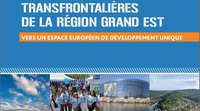
In December, the Grand Est Region published a brochure setting out its strategic orientations in the area of cross-border cooperation.

After two years of co-construction, the elected representatives of the Grand Est Region presented the major elements of the Region’s SRADDET at an event in Metz on 30 November 2018.
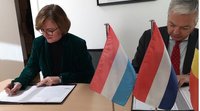
On 11 December 2018 in Brussels, a declaration of intent regarding the development of closer cooperation between France and the countries of the Benelux Union (Belgium, Luxembourg and the Netherlands) was signed.

On 7 December 2018 in Metz, the EURES Resource and Documentation Centre/Grand Est Cross-Border Workers hosted the annual seminar of EURES advisers in the Greater Region.
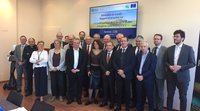
A seminar on the fair distribution of taxes and social security contributions in cross-border areas was held on 25 October in Geneva by the FEDRE Foundation and the Council of Europe’s Congress of Local and Regional Authorities.

The MOT, and the Jacques Delors Institute have in a 50-page document compiled a summary of the five cross-border citizen consultations that they held with local partners.

On the occasion of the French president Emmanuel Macron’s visit to Belgium on 18 and 19 November, a declaration of intent on strengthening cooperation in matters of cross-border mobility and transport was signed by the two countries:

Citizens turned out for the citizens’ consultation held on 27 October by the Lille-Kortrijk-Tournai Eurometropolis, the MOT and the Jacques Delors Institute. This was a thoroughly European story.
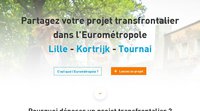
This new platform of the Lille-Kortrijk-Tournai Eurometropolis is aimed at developers of cross-border projects who wish to raise their profile, to find partners on the other side of the border, or who require assistance in implementing their project.
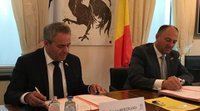
An enhanced cooperation agreement between Wallonia and the Hauts-de-France Region was signed on 15 September. It covers territorial development, mobility and jobs and reaffirms the desire to complete the planned linking up of the Seine-Escaut Canal on the Belgian side and the Seine-Nord Europe Canal on the French side.

The French prime minister has entrusted the Prefect of the Grand Est region with a mission relating to the institutional solutions available to give form to the “longing for Alsace”.
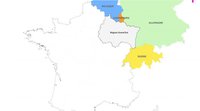
On 11 July 2018 in Châlons-en-Champagne in France, a meeting of the Grand Est Regional Administration Committee (CAR) was held: a veritable ‘board meeting’ of the State in the region, bringing together every two months the prefects of the region and the départements, and all of the decentralised services of the State.

More than 100 people gathered on 12 June 2018 in the ancient Vaucelles Abbey (Cambrésis, Nord) for the first Departmental Meeting on Cross-Border Cooperation organised by the Nord Department.

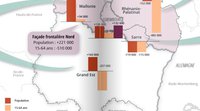
This new issue of "InfObservatoire" sets out the cross-border forecasts of the North Lorraine Urban Planning Agency (AGAPE): "With 150,000 French cross-border workers in Luxembourg in 15 years and huge movement of goods, isn't it time […] to make the cross-border dimension a priority issue?"
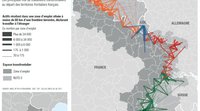
The General Commission for Territorial Equality (CGET) has just published its 2017 annual report. An extensive chapter looks at the dynamics of cross-border employment. Border issues are also discussed in other sections of the report.
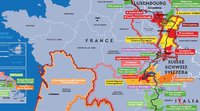
To mark its 20th anniversary, the MOT produced a map of European cross-border territories. Now, on the occasion of its 21st General Assembly, it is publishing – and has had printed in the form of a large poster – a map showing the cross-border territories along France's borders.
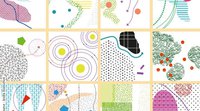
The MOT contributed to this publication* produced by the Institut Destrée et Acadie, following a series of Franco-Walloon cross-border seminars entitled "Territoires en trans– : mythologies, réalités et dispositifs" ("Trans- territories: mythologies, realities and mechanisms"). This document (available in French only) provides an in-depth analysis of cooperation between France and Wallonia.
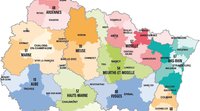
The new French regions have to draw up a "Schéma régional d’aménagement, de développement durable et d’égalité des territoires" (SRADDET – Regional Spatial Planning, Sustainable Development and Territorial Equality Plan). In order to set out a unifying political project for its territory, the Grand Est Region has chosen to place the cross-border dimension at the heart of its actions and to involve its cross-border partners in drawing it up.

More than 100 people – elected representatives, technicians and civil society players – took part in the event on 22 March to launch the Lille-Kortrijk-Tournai Eurometropolis's "Parc Bleu".
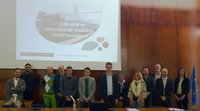
The MMUST project (Multimodal model and scenarios for cross-border mobility) has just been approved by the Greater Region Interreg VA programme. It is an ambitious project that aims to simulate cross-border movements between France, Luxembourg, Germany and Belgium.

"Beyond the speeches and symbols, what meaning can the concept of a cross-border region have? By defining the region as an identity-based, territorial and institutional construction that endures over time, this work identifies and interrogates the specificities of this process in the cross-border setting. The issues are explored using the emblematic example of the Greater Region, which launched a long-term strategy in 2008 involving Lorraine, Luxembourg, Rhineland-Palatinate, Saarland and Wallonia."
As part of the "UniGR - Centre for Border Studies" project, the six member universities (Kaiserslautern, Liège, Lorraine, Luxembourg, Saarland and Trier) of the University of the Greater Region (UniGR) are going to set up a "European centre of skills and resources in border studies" with international visibility.

Two workshops and a study trip with local stakeholders were organised around this topic in the territories of SaarMoselle and Flanders-Dunkirk-Côte d’Opale, as part of the work of IHEDATE (Higher Education Institute for European Development and Planning - Institut des hautes études de développement et d'aménagement des territoires en Europe).

The Regional Economic, Social and Environmental Council (Ceser) of the Grand Est region has published a study looking at the reduction of cross-border obstacles in the Grand Est region.